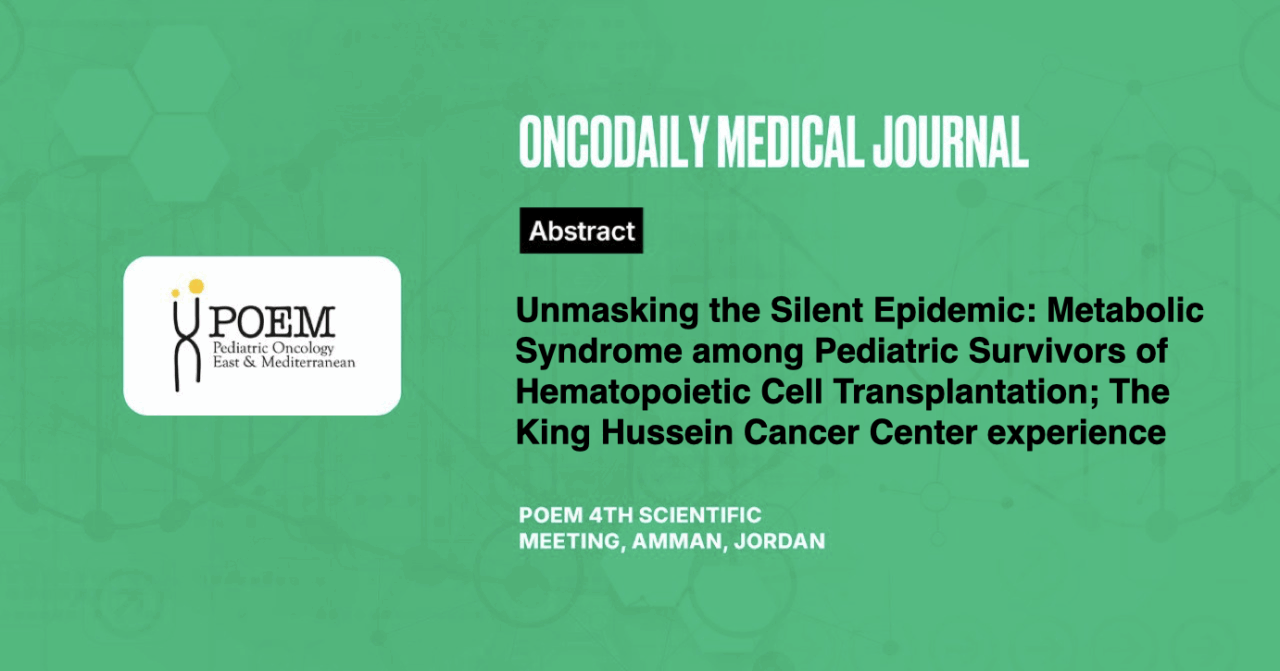Unmasking the Silent Epidemic: Metabolic Syndrome among Pediatric Survivors of Hematopoietic Cell Transplantation; The King Hussein Cancer Center experience
Abstract
Introduction: As Hematopoietic Cell Transplantation (HCT) survivors are increasing , the long term complications have increased . Metabolic syndrome (MS) is defined as a combination of any three of five following criteria: obesity, hypertension, elevated triglyceride, decreased high density cholesterol (HDL) (<40 in males ,<50 mg/dl in females) or dysglycemia. This study aims to quantify MS prevalence and risk factors among HCT survivors.
Methodology: Retrospective medical records review of the survivors of pediatric HCT recipients between 2003 – 2022 with a minimum of one year follow up post HCT. Demographic data, indications for HCT and features of MS were collected.
Results: 332 pediatric HCT survivors were included, 191 (57.5%) were males, median age at HCT was 9.4 (0.1-18) years. In 162 (49%) HCTs were done for malignant conditions and in 170 (51%) for non-malignant conditions. Median follow up post HCT was 6.9 years (1-19.8) . Obesity/overweight was noted in 119 (35.8%) patients at last follow up, HDL was low in 118 (35.5%) patients and 87 (26%) patients had high triglyceride. Hypertension was encountered in 38 (11.4%) patients and diabetes mellitus in 21(6.7%). Thirty-nine (11.7%) patients met diagnostic criteria for MS at last follow up.
The risk of developing MS was similar in both genders but increased with increasing age at HCT; median age at HCT in MS patients was 10.6 (range 1-17.7) years vs. 9.3 (0.1-18) years, p= 0.054. MS occurred more in HCT survivors of malignant conditions compared to non- malignant 61.5% vs 38.5%, p= 0.09. Two third of HCT survivors (n=24; 61.5%) with MS had normal Body Mass Index (BMI) at time of HCT, compared to 38.5% of overweight/obese; p=0.016. MS in HCT survivors occurred in 33 (85%) patients with high BMI vs 5 (12.8%) patients with normal BMI and in 1 malnourished patient, p< 0.001.
Conclusion: The high prevalence of MS syndromes in pediatric HCT survivors highlights the importance of vigilant monitoring and targeted interventions.





